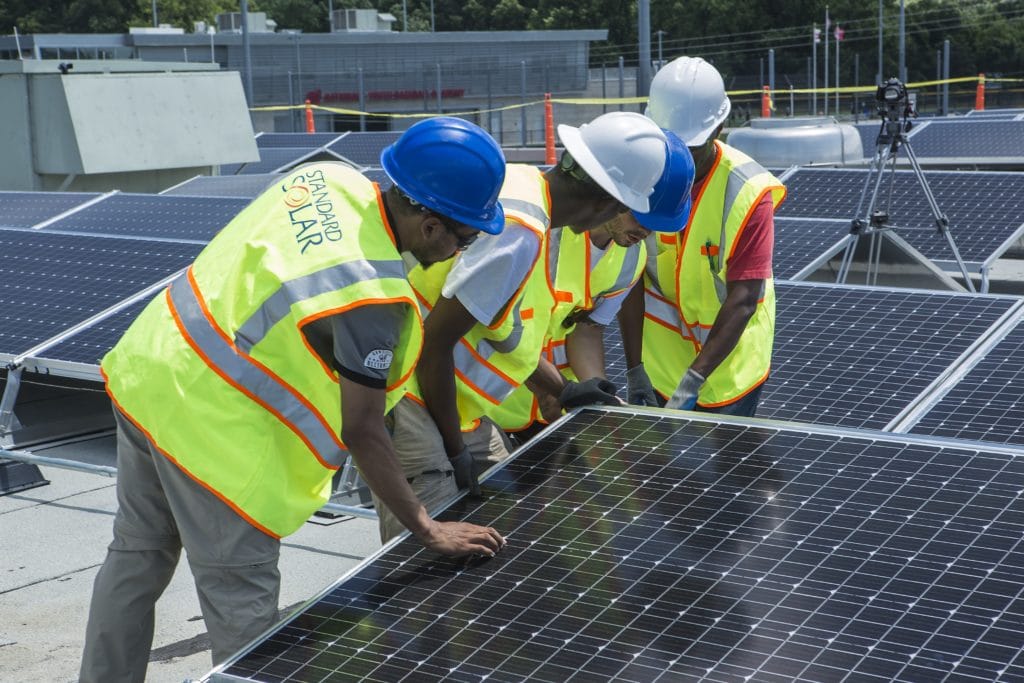The U.S. Department of Energy (DOE) released the 2023 U.S. Energy and Employment Report (USEER), an annual study that tracks employment trends across the energy sector, and it shows that the energy workforce added 300,000 jobs in 2022, of which 114,000 were in clean energy.
Clean energy technologies, such as solar and wind, accounted for more than 84% of net new electric power generation jobs, adding over 21,000 jobs, or a growth of 3.6% in 2022 over the previous year. Jobs related to zero emissions vehicles saw nearly 21% growth, adding over 38,000 jobs.
“Today’s report shows that the clean energy transition is accelerating, with job growth across every pocket of America, and that unionized employers are filling these new positions with much more ease than non-unionized employers,” said U.S. Secretary of Energy Jennifer M. Granholm. “Thanks to President Biden’s historic Investing in America agenda, we expect to see steady growth of jobs to make and build a resilient and clean energy system offering good-paying and secure employment opportunities to America’s workers across the country.”
Jobs in both solar and wind have been on an upward trajectory since 2020. The report notes that solar had the largest number of jobs gained, adding 12,256 workers (+3.7%).
Another area of growth is in the clean vehicle industry, which includes battery electric, plug-in hybrid, and hydrogen/fuel cell vehicles. The most rapid growth was in battery electric vehicle jobs, which added more than 28,000 jobs, and increase of 27%.
Looking at job growth from a regional perspective, while all states experienced growth, California topped the charts with 13,000 clean energy jobs added or an increase of 3.2%. West Virginia was next, with 7,000 added jobs (+19%) and Texas added 5,100 clean energy jobs (+3.5%).
A demographic shift was noted, as women made up more than half of the net 300,000 energy jobs added in 2022. Veterans, who make up 5% of the jobs in the overall economy, make up 9% of jobs in the energy workforce. The energy workforce is also younger than the national workforce average, with 30% under 30 years old. Black, Hispanic or Latino workers are still underrepresented across the energy workforce. Diversity may soon increase, however, as 11% of energy workers are union labor, and union employers were found to be twice as likely to have a policy to recruit persons of color, and 2.5 times more likely to have a policy to recruit LGBTQ+ people.
“This new data from the 2023 U.S. Energy and Employment Report shows strong growth in energy jobs, and as investments from the Bipartisan Infrastructure Law and Inflation Reduction Act really start to gear up, I expect we’ll see this growth accelerate over the next few years.” said U.S. Senator Jeanne Shaheen (NH).
The growth in clean energy jobs was faster than last year’s robust overall job growth, the report points out. And the growth is expected to continue, as the nation works toward achieving the Biden Administration’s goal of 100% clean electricity by 2035 and a net-zero economy by 2050, through the Invest in America Agenda.
This content is protected by copyright and may not be reused. If you want to cooperate with us and would like to reuse some of our content, please contact: editors@pv-magazine.com.









By submitting this form you agree to pv magazine using your data for the purposes of publishing your comment.
Your personal data will only be disclosed or otherwise transmitted to third parties for the purposes of spam filtering or if this is necessary for technical maintenance of the website. Any other transfer to third parties will not take place unless this is justified on the basis of applicable data protection regulations or if pv magazine is legally obliged to do so.
You may revoke this consent at any time with effect for the future, in which case your personal data will be deleted immediately. Otherwise, your data will be deleted if pv magazine has processed your request or the purpose of data storage is fulfilled.
Further information on data privacy can be found in our Data Protection Policy.